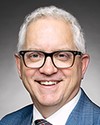Thank you, Ms. Digout.
Thank you, Mr. Champoux.
We'll now go to Mr. Davies for two and a half minutes.
Evidence of meeting #41 for Health in the 44th Parliament, 1st session. (The original version is on Parliament’s site, as are the minutes.) The winning word was children.
A recording is available from Parliament.
Conservative

The Vice-Chair Conservative Stephen Ellis
Thank you, Ms. Digout.
Thank you, Mr. Champoux.
We'll now go to Mr. Davies for two and a half minutes.
NDP

Don Davies NDP Vancouver Kingsway, BC
Thank you.
I've seen statistics that say about 32% of Canadians have no access to dental insurance, but it's about 50% of low-income Canadians who don't have access to dental care. This is one of the few areas of health care where the effects of poor health are visible. They're on our face. I know it's well documented that dental issues cause pain, but they also cause embarrassment and shame.
With respect to children, is there any connection between poor oral health and facial disfigurements and mental health? Would you recommend that we address that gap in our health care system as a means of dealing with children's mental health issues?
Clinical Assistant Professor, University of British Columbia, As an Individual
Yes, absolutely. Children are very sensitive to the ways in which.... I would say that the newest generation is much better at not teasing or picking out differences in kids, but kids are still kids, especially in middle school. It makes it very hard.
When I think about this, I think there's a neglected population in neurodiversity. I work with a lot of children who have autism, who have neurodevelopmental disabilities and intellectual disabilities. Many times they are hospitalized with severe aggression, hurting themselves very severely because of poor oral care. When you can't express where pain is coming from, it can result in headbanging and a lot of injuries. We certainly see oral care relating to hospitalizations. I've had many hospitalizations where the solution is to consult a dentist, and I'm in a mental health facility. Certainly, oral health matters.
When we think about what makes kids feel confident, we realize that if they're having pain or have some form of deformity, that makes it obvious this is going to impact their mental health for sure.
Psychologist, As an Individual
The only other thing I would add is that in the neurodiverse community, there are often some difficulties around performing even daily oral care because of sensory issues. I think it's a really important role for mental health clinicians, and occupational therapists particularly, to work with kids who have sensory issues. It's even painful for them to brush their teeth, and they can't get past it. There's the way that things look, but there's also a big issue around ensuring proper care.
There are other mental health issues where dental care becomes an issue, when the kids can't take care of hygiene. In early psychosis, that's one of the things we see regularly. We start to see some of those pieces not being done daily.
Conservative

The Vice-Chair Conservative Stephen Ellis
Thank you very much, Ms. Digout.
Thank you, Mr. Davies.
At this time, we'll return to Ms. Goodridge.
You have the floor for five minutes.
Conservative

Laila Goodridge Conservative Fort McMurray—Cold Lake, AB
Thank you, Dr. Ellis.
I want to go back to something I asked earlier about children's substance use.
Earlier in the study, we had Bruce Squires from McMaster Children's Hospital in Hamilton, Ontario, come before the committee. One thing he shared with our committee is that they had seen a 90% increase in admissions for eating disorders and a doubling in admissions for substance-use disorders among the kids coming into their space at McMaster. To me, those numbers are extremely troubling.
Dr. Black, you then shared that it is actually going down, from what you've seen in the statistics. I'm wondering if you could table with the committee the statistics you referenced. It's either doubling or it's going down, but I think this is highly problematic that we perhaps don't have all the right information.
Would you be willing to table that with the committee?
Clinical Assistant Professor, University of British Columbia, As an Individual
Yes. If I may, Ray et al. published, in the Journal of the American Medical Association, a study of Ontario admissions for overdose and self-harm. We have the McCreary Centre reports that I'd like to enter so that you can have access to some larger Ontario data.
Conservative

Laila Goodridge Conservative Fort McMurray—Cold Lake, AB
Thank you.
I will note—and I'm hoping that all members have done the required sound checks before participating—that it doesn't appear you're using the House of Commons headset, and there is some challenge in hearing you.
Do you by chance have that headset, so we can make sure we're protecting the health and safety of our interpreters?
Clinical Assistant Professor, University of British Columbia, As an Individual
Certainly I can use it. I did the sound check and they said it was good.
Conservative

Laila Goodridge Conservative Fort McMurray—Cold Lake, AB
Fantastic.
It's one of the interesting challenges we've been having at the House of Commons, especially as we've gone to hybrid sittings. There have been injuries to our interpreters due to people not using the appropriate headsets. It's just something that I think is good practice.
I apologize for not catching that earlier, but better late than never. It might prevent an injury to one of our interpreters.
You talked about the need for more harm reduction. Do you believe that there are enough treatment spaces available for children who have substance-use disorders in this country? Do you believe that treatment and recovery should be put before harm reduction?
Clinical Assistant Professor, University of British Columbia, As an Individual
Harm reduction is an element that comes first.
Certainly we need treatment when it's needed. You need a child who is willing to do treatment, who is in a state of change where treatment will be fruitful. Of course, when things are in crisis, we need acute access to treatment and withdrawal management, and those types of things as well.
Harm reduction is an overall philosophy that starts even at the family kitchen table and works all the way through to the hospital environment. Harm reduction is the model that can apply at any stage—even early.
Conservative

Laila Goodridge Conservative Fort McMurray—Cold Lake, AB
Thank you, Dr. Black.
I would argue that would be more in the education and prevention aspect of those conversations, and they're critically important. I don't think, as a society, we do enough to alarm our kids about the risks of addiction and substance-use disorders as a whole. I would hope that each and every one of us can be champions for reducing substance-use disorders. I know that it's disproportionate in many of our rural and isolated communities, which often will end up having a suicide crisis because they do not have adequate support.
Ms. Digout, perhaps you could highlight what you're seeing in rural Nova Scotia when it comes to this issue with addictions.
Psychologist, As an Individual
I agree with Dr. Black that the harm reduction philosophy is kind of.... I guess that's the standard with which we have to start, but we don't have enough treatment facilities when they are required. With regard to harm reduction, there's actually a very specific way to use harm reduction in therapy. It is a proactive, a family and an educational issue, but within therapy, it's very specific, looking at ways that children or youth can start examining their own use, whether it creates harm in other ways that they might want to reduce, and whether they are interested in reducing harm and able to see it. There's the therapeutic modality of harm reduction as well as the philosophy that kind of is the overarching ideal.
Conservative

The Vice-Chair Conservative Stephen Ellis
Thank you, Ms. Digout.
Thank you, Mrs. Goodridge.
I'll turn to Dr. Hanley.
You have the floor for five minutes, sir.
Liberal

Brendan Hanley Liberal Yukon, YT
Thank you very much, Chair.
I would like to thank both of the witnesses for their testimony today and, like Mr. van Koeverden said, for their amazing work.
The general theme, I think, in my questions is addressing our previous study, which we're just analyzing the report on, and that's the health care workforce crisis with a lens around mental health needs and how we get better not only on the prevention side but also at maximizing access to service. It's in that vein.
Dr. Black, briefly, to follow up on Mr. Vidal's question on the use of the ASARI tool, are we doing well enough in risk assessment in the emergency department amongst our health care providers? Between the HEARTSMAP tool and the ASARI tool.... Are these tools that are already helping us, perhaps, be more consistent in how we do risk assessment and communicate that risk assessment? Maybe you could elaborate on that a little bit.
We're not hearing you now.
Conservative

The Vice-Chair Conservative Stephen Ellis
Dr. Black, we don't have any audio, and by the visual, it says you are on mute.
Clinical Assistant Professor, University of British Columbia, As an Individual
I've just switched back. I'm still trying to figure out the headset because I didn't test this one—my apologies.
The ASARI and the HEARTSMAP tools, when used, can be really helpful in both documenting risk and communicating it—as well as the HEARTSMAP tool in its psychosocial assessment. The HEARTSMAP tool actually calculates what an emergency physician could consider next as a course of action and who to consult with, not just with regard to mental health but for social and physical needs, youth health needs and these types of things. It would be really helpful to be used.
As for risk assessment in general, it's very hard to predict who will die by suicide and who won't. In fact, there is no risk prediction system that gets better than a positive predictive value of 1%. Therefore, risk assessment is often trying to figure out what the risk factors are that make suicide more likely and what the protective factors are that make it less likely, trying to cut away as many risk factors as possible and add as many protective factors as possible. This is something that every human working with kids can do. I see a lot of efforts zeroing in on prediction, and I wish the science were there, but it's just not. However, risk reduction and protection increase are very achievable goals in any setting, including emergency departments.
Liberal

Brendan Hanley Liberal Yukon, YT
Thank you. That's very helpful.
Ms. Digout, I'm hearing from private clinics in my territory that there are long waiting lists. They often have to provide pro bono services to those who don't have coverage. They're short-staffed and often overwhelmed due to the public mental health and addiction service itself being backlogged due to demand. You've spoken about this, and I'd like you to elaborate a bit. I think you mentioned the possibility of advocacy for MSI coverage for your cadre, and I know I've heard that.
Maybe you could speak about how you think it would help improve access to mental health services if your cadre of service was actually covered under the public health insurance plan.
Psychologist, As an Individual
I know that there's currently debate in Nova Scotia around how to make that work, because our government is strongly looking at a way of billing private practitioners. On the difference between clients who have private health insurance, who I can direct bill, compared with the people who have to pay up front and then get reimbursed or are paying out of pocket, the ability to not get stressed over the finances of this is really important. From a practice point of view, taking that financial stress off the client and the family is really important.
For us as practitioners, there's nothing more heartbreaking than having to turn someone away because you don't have space in your schedule, or you already have five people who you are seeing pro bono and you just physically or financially can't continue to do that. It's heartbreaking. We talk about burnout, and those are the types of things that burn out psychiatrists, psychologists and social workers. It's not the work when we're helping. It's when we can't provide what we know should be there.
Conservative

The Vice-Chair Conservative Stephen Ellis
Thank you very much, Ms. Digout.
Thank you for that, Dr. Hanley.
That concludes two rounds of questioning.
The third round of questioning will go to Mr. Vidal for the Conservative Party for five minutes.
Conservative

Gary Vidal Conservative Desnethé—Missinippi—Churchill River, SK
Thank you, Mr. Chair.
I want to follow up on a couple of things that were said earlier. One was said by Dr. Hanley, who talked about the staffing issues we're seeing here in facilities and whatnot.
As a bit of an example, there's a facility that was announced and built in my riding. It's a facility for the treatment and recovery of those dealing with mental health problems and addictions. It's a 20,000-square-foot facility, and $16.1 million was invested in this 24-bed facility. It was announced and opened in June, and I had the privilege of touring it in July. Much to my chagrin, it was empty. There wasn't a patient in the facility, because they don't have the staff.
I'm just curious to hear your response. What level of frustration would that indicate for you in your worlds when we build a $16-million facility, but we don't have the wherewithal to actually staff it?
Clinical Assistant Professor, University of British Columbia, As an Individual
It's very frustrating. This happens in hospitals, where bed decisions and treatment decisions are changed based upon staffing levels. This is something that we encounter regularly.
You can make a space, but it needs bodies, as Ms. Digout was mentioning. We need people doing what they do. We've had a tremendous amount of burnout. We have a number of people leaving. It's very hard to replace people with experience. We're finding that many facilities are struggling with staffing issues on a daily basis.
It's not just about providing a space but about making sure that space includes the humans inside it, and that requires an ongoing commitment. If you look at it relative to other things people could be doing with their time, sometimes it becomes very disheartening to work in mental health, which always seems a bit neglected compared with other areas of health.
Conservative

Gary Vidal Conservative Desnethé—Missinippi—Churchill River, SK
Ms. Digout, do you want to make a quick comment, or do you want me to move on to my next question? I can come back to you with it if you want.